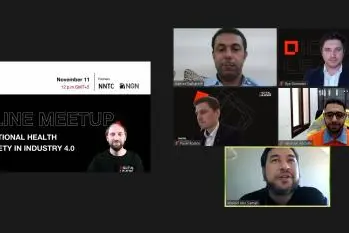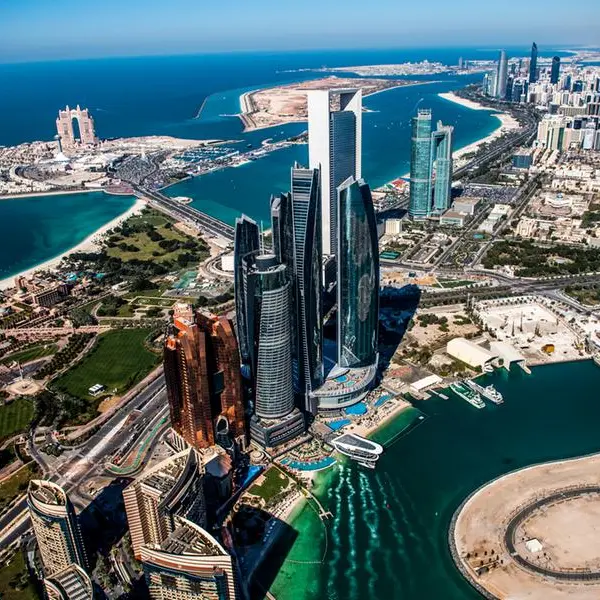PHOTO
Dubai, UAE: NNTC, a UAE-based software developer and solutions provider, in collaboration with IT company NGN International and networking platform Digital Leader, recently held an online meet-up to discuss ‘Occupational Health and Safety in Industry 4.0’. Experts attending the virtual event shared how high-profile businesses create and ensure a safe working environment for their employees, as well as strategies to leverage virtual reality (VR), Internet of Things (IoT), and machine vision to tackle the challenges impeding a safe ecosystem.
“Workplace injuries have a significant impact on a company’s bottom line. Employers that implement effective health and safety practices can expect to reduce accidents, and the costs associated with these accidents, including compensation, medical bills and loss in productivity. Effective workplace safety measures can substantially boost an organisation’s profitability. Extended reality (XR), video analytics and IoT technologies can mitigate the frequency of workplace accidents, as well as the time needed to onboard new equipment and train new employees,” noted Dmitry Doshaniy, General Manager at NNTC.
According to a recent report[1], enterprises are now using digital tools to enhance their business operations — 82% of companies surveyed noted that the benefits of implementing AR or VR technologies are either meeting or exceeding their expectations. Other instances of the economic benefits of these technologies include Boeing’s use of XR tools to cut an entire month from their three-month training for mechanics, and software developer Program-Ace’s Oil Platform Simulator that reduces the frequency of accidents and injuries by 43%, and the time required for the adoption of new equipment by 27%.
Representatives from prominent regional and international entities — including Saudi Aramco, Aluminium Bahrain, Rosatom and the Ministry of Transportation, Communication and Information Technology of Oman — shared best practices for occupational safety at the digital meet-up, as well as innovations in line with Vision Zero, the concept of a world without accidents, and how these can be tailored to the manufacturing, petrochemistry, oil and gas, utilities and energy industries.
“Industry 4.0 marks a paradigm shift, but as we embrace this new and accelerating industrial trend, we also need to consider its impact on occupational health and safety. Certainly, it presents challenges as well as opportunities. It is important to first assess an organisation’s fitness to make the shift to Industry 4.0 to ensure a smooth transition in the occupational health and safety domains,” said Hesham Abdulla, Head of SHE Compliance, Aluminium Bahrain.
Ilya Simonov, Head of CROC Immersive Technologies, business unit of IT company CROC, commented: “Industry 4.0 has introduced immersive technologies like virtual reality, which can help better train employees to excel at their jobs while keeping them safe. Traditional training methods can be ineffective as practical skills can only be studied during equipment shutdowns once a year or less. With VR, training can be delivered on-demand in a safe environment and through realistic simulations. We are pleased to note the interest of the meet-up's participants in adopting immersive technologies for occupational health and safety tasks.”
Speakers at the meet-up also discussed how the oil and gas industry leverages wearable IoT and other technologies to monitor personnel safety and health, and how digital transformation can boost efficiency and effectiveness. During a final discussion, panelists concluded that in order to get the maximum value out of these technologies, it is important for a company to first define the challenges impeding the efficiency of its business operations, and then adopting the technology best suited to tackle these specific set of challenges. The panelists also noted that while the return on investing in occupational health and safety was not always calculable or immediately visible, it contributed heavily to employee effectiveness and a brand’s overall image.
[1] Source: Augmented and Virtual Reality in Operations: A Guide for Investment
© Press Release 2020
Disclaimer: The contents of this press release was provided from an external third party provider. This website is not responsible for, and does not control, such external content. This content is provided on an “as is” and “as available” basis and has not been edited in any way. Neither this website nor our affiliates guarantee the accuracy of or endorse the views or opinions expressed in this press release.
The press release is provided for informational purposes only. The content does not provide tax, legal or investment advice or opinion regarding the suitability, value or profitability of any particular security, portfolio or investment strategy. Neither this website nor our affiliates shall be liable for any errors or inaccuracies in the content, or for any actions taken by you in reliance thereon. You expressly agree that your use of the information within this article is at your sole risk.
To the fullest extent permitted by applicable law, this website, its parent company, its subsidiaries, its affiliates and the respective shareholders, directors, officers, employees, agents, advertisers, content providers and licensors will not be liable (jointly or severally) to you for any direct, indirect, consequential, special, incidental, punitive or exemplary damages, including without limitation, lost profits, lost savings and lost revenues, whether in negligence, tort, contract or any other theory of liability, even if the parties have been advised of the possibility or could have foreseen any such damages.











